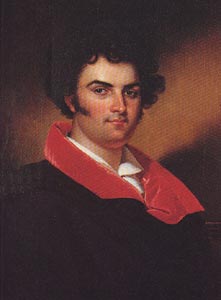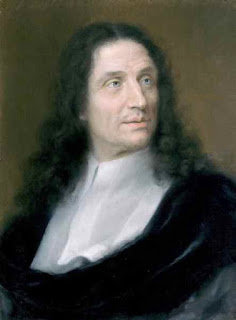Tenor was as famous in his day as Caruso
 |
| Giovanni Battista Rubini |
He was the first 19th-century non-castrati singer to become a major international star after two centuries in which audiences and composers were obsessed with the castrati. Rubini's exceptionally high voice could match the coloratura of the castrati and he effectively launched the era of the bel canto tenor, which signalled the end of the dominance of the castrati.
Rubini was just 12 when he was taken on as a violinist and chorister at the Riccardi Theatre in Bergamo, not far from his home town of Romano di Lombardia. He was 20 when he made his professional debut in Pietro Generali’s Le lagrime d’una vedova at Pavia in 1814, then sang for 10 years in Naples in the smaller, comic opera houses.
Famed for a voice capable of reaching beyond the range of conventional tenors, particularly in the higher registers, in 1825 he sang the leading roles in Gioachino Rossini’s La Cenerentola, Otello, and La donna del Lago in Paris and was soon regarded as the leading tenor of his day.
After he had premiered Bellini's Bianca e Gernando in Naples the following year, Bellini began to write specifically with Rubini's voice in mind, giving him the tenor leads in Il pirata, La sonnambula and I Puritani.
Rubini was cast in I Puritani with the soprano Giulia Grisi, the baritone Antonio Tamburini and the bass Luigi Lablache. The group achieved popularity together as the “Puritani quartet.”
The four appeared together again in Donizetti's Marino Faliero during the same season, in 1835, then travelled to London with the Irish composer Michael William Balfe for a further round of operatic engagements.
Rubini premiered Donizetti's La lettera anonima, Elvida, Il giovedì grasso, Gianni di Calais. Il paria and Anna Bolena as well as Marino Faliero.
A genuine international star, Rubini alternated during his peak years between the Théâtre-Italien in Paris and His Majesty’s Theatre in the Haymarket, London.
He toured Germany and Holland with Franz Liszt in 1843 and in the same year performed in St. Petersburg, Russia. Czar Nicholas I appointed him Director of Singing and made him Colonel of the Imperial Music.
 |
| A gateway in Romano di Lombardia featuring the Venetian Lion of St Mark's. (Photo: Luca Giarelli CC BY-SA 3.0) |
He bought a palazzo there, where he died in 1854. He was hardly an attractive figure, short and pockmarked according to references made at times to his physical appearance. Yet his fame enabled him to conduct numerous affairs and he passed away a month short of his 60th birthday, apparently stricken with a sexually transmitted disease that robbed him of his voice and ultimately his life.
Travel tip:
Romano di Lombardia is a small town with a population of just under 19,000 in Lombardy, in the province of Bergamo, close to the River Serio and on the railway line between Milan and Brescia. Its history dates back to Roman times and later it was ruled for many years by Venice, evidence of which still exists around the town in symbols depicting the Lion of St Mark's. The palazzo Rubini bought on his return to Romano became a museum after his death.
 |
| The Teatro Donizetti in Bergamo is built on the site of the Teatro Riccardi, where Rubini sang and played the violin |
The Teatro Riccardi in Bergamo, where Rubini became a violinist and chorister at the age of 12, was destroyed by fire towards the end of the 18th century and rebuilt in brick. It is now known as Teatro Donizetti.
















